185 km, 7 days, over 50,000 farmers: why #FarmersMarchToMumbai matters
Landless and adivasi farmers marched 180 km to Mumbai's Azad Maidan, highlighting the distress the agrarian community in India faces and the pressing need for a radical overhaul of the sector.
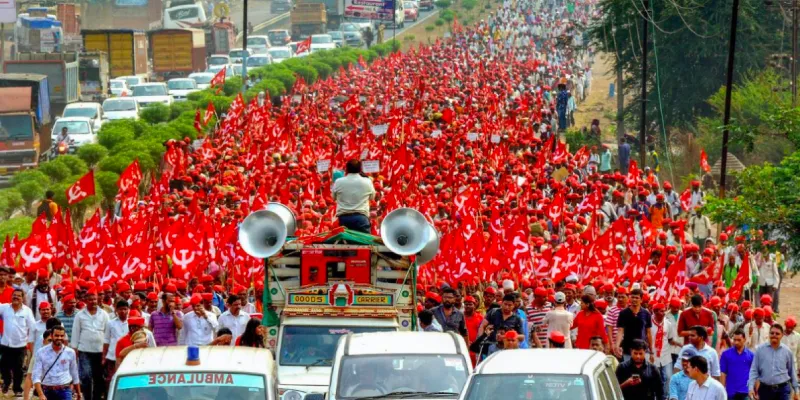
Sixty-eight-year-old Radhabai Pawar’s energy is infectious. Despite the long arduous walk, the 185-km journey in six days in the blazing hot sun, her resilience overpowers fatigue.
“My fight is for my grandchildren. My hands are rough today after working on the fields; we till the soil, harvest the crops. Yet, the land does not belong to us. I have lived here since my marriage and this land is all I know, all I have. I am here to get this land on my family’s name; to secure my children’s future.”
Similar stories echoed across Mumbai’s Azad Maidan, which saw close to 50,000 landless and adivasi farmers gathering from tribal belts such as Kalwan, Sargana and Dindori in Nashik; Talasari, Mokhada and Jawhar in Palghar; Shahapur and Murbad in Thane; and parts of Jalgaon. Walking non-stop for the past week, these farmers marched to the State Legislature in South Mumbai, asking the Devendra Fadnavis-led Maharashtra Government to grant them their rights.
Balaji Balaraman believes that ground-level partnership and co-ownership model in the agri-sector — one that is inclusive, sustainable, and scalable — is the only way to bring farmers out of the vicious cycle of loans, crop failure and debts.
After working with over 2.5 lakh farmers across India, the Founder of AgriBolo says, “Marketing is the solution. You need a transparent pricing mechanism in the mandi and e-NAM needs to be implemented widely. Transparency needs to be there in crop insurance as well.”

Their demands included unconditional loan waivers, implementation of the MS Swaminathan Commissions recommendation which seeks to increase the Minimum Support Price guaranteed to the farmer, compensation for crop loss, and - more importantly - implementation of the Forests Rights Act which seeks to accord land rights to forest-dwelling communities.
With the State Government agreeing to most of their demands, the farmers called off their protest on March 12. Yet, this march is important for several reasons. One, it highlights the falling share of agriculture to the country's GDP over the past decade. Further, it sheds light on the burden on the farmers and agrarian community due to poor implementation of welfare schemes and laws.
My land, my right
The Forest Rights Act, 2006, allows an adivasi landless farmer to own four hectares of land, giving him or her legal customary rights over the home and cultivation land.
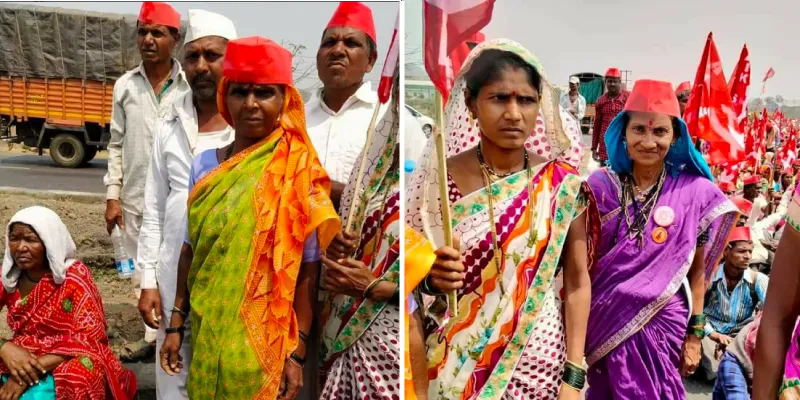
Geetanjoy Sahu, assistant professor at the Tata Institute of Social Sciences and co-author of the Community Forest Rights - Learning and Advocacy Group Maharashtra report, says:
“The act empowers farmers to invest more and take credit on the basis on their land. More importantly, FRA is not only for individual forest rights, but acknowledges community forest rights. In drought-hit Maharashtra, where farmers are already struggling, the implementation of FRA will provide farmers an additional source of income and livelihood through the forest resources. It can address the ongoing agrarian distress.”
Maharashtra has emerged as the frontrunner in the implementation of the 12-year-old law, with only one district witnessing an above 66 percent enactment of the law. “If Gadchiroli is taken out of the picture, Maharashtra’s average performance of community forest resource rights (CFR) implementation would be approximately 10 percent,” the report stated.

Geetanjoy explains that the Act has been interpreted wrongly by a few officers, and while adivasis have been recognised as land owners, people from scheduled tribes and other backward castes continue to struggle for their land rights.
“The law states that an individual can claim for the land if he has lived on the land for over three generations. The officials have interpreted this as equivalent to 75 years,” he adds.
The farmers have also expressed their fear over the proposed river-linking scheme in Nashik, Thane, and Palghar districts. They worry that this project will lead to flooding and submergence of the tribal belt.
Sluggish economic growth
That India is predominantly an agrarian economy is well known, with the sector contributing 13 percent to the country’s GDP. Sixty percent of rural households depend on agriculture and associated industries. India has the second-largest arable land globally — only second to the US — with its 160 million hectares.
Yet, this sector is bleeding. A dearth of innovation, basic infrastructure, and market connect; and India’s over-dependency on monsoons has led to slowdowns and stagnation in the farming sector.
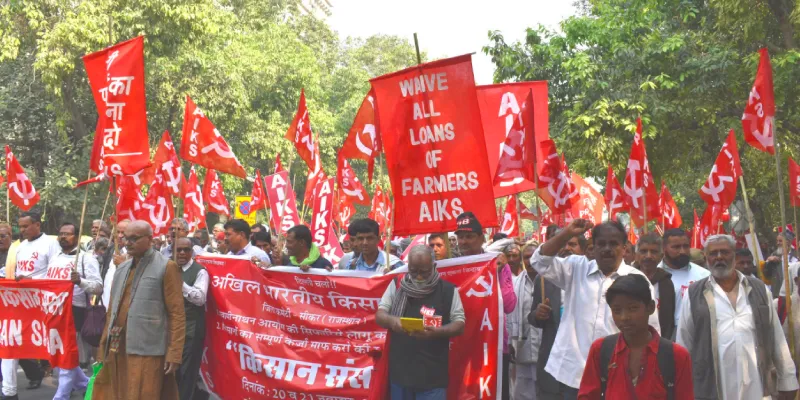
Today, around 70 percent of agricultural households, mostly comprise small farmers with less than one hectare of land holding, struggle to make ends meet and depend on loans for their farming activities. Further, only 45 percent of the net sown area has access to irrigation facilities, leading to challenges in the production phase itself. This forms the primary basis for the agrarian distress faced by India.
“The truth is we are now at a situation where India needs to create 20 million new jobs every year, for the next 20 years, because the number of people who are coming into the work force are about 12-15 million every year,” says Nitin Pai, founder of independent think-tank The Takshashila Institute.
Speaking at an interaction over P Chidambaram’s book, Speaking Truth to Power, Nitin explains that agricultural work in rural areas fails to generate income for the rural youth. In India, 100 people do the same job as one farmer in the US or 20 farmers in China.
“Doubling of farmers income by ‘x’ number will not happen as long as you have that many number of people. Even Dr Ambedkar had written about it in 1917 and stated that you need to get people out of farms and get them formal jobs so that you can get capital and growth,” he adds.
An overhaul needed
Noted economist and author Shankkar Aiyar in an earlier interview said, “Agriculture needs far more attention than it is getting now. The Indian agriculture system needs a total overhaul, starting with the cropping pattern and restructuring of the business model of farming.”
To mitigate the farm distress, over the years the government has declared loan waivers as a way out. The Maharashtra Government declared a farm loan waiver on June 24, 2017. The sop was estimated to cost the state exchequer around Rs 34,022 crore, which covered benefits for around 6.7 million farmers.
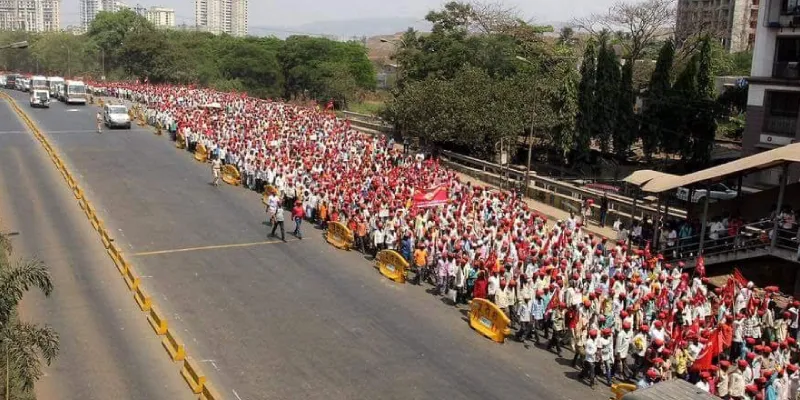
This waiver is yet to be realised, and many small and marginal landless farmers failed to avail this waiver due to the various conditions imposed on this scheme.
However, economists view that farm loan waivers are a short-term solution. Shankkar Aiyar adds, “Farm loan waiver is like a saline drip for a patient in critical condition. It is a prescription not for cure. Farming is a private sector activity. Yet it is bound by several rules, regulations and conditions because of which the farmer, though he produces, does not get the price.”
He explains that a wide range of activities—including availability and access to bank credit in real time, enabling access to markets, and mentoring of the farmers—needs to be undertaken for farm sector revival.
The way forward
With the aim to bring both farmers and the urban people together, Vijay Kumar founded “I Support Farming” so that the country as a whole could partner and support agriculture.
He says, “One of the challenges faced by the farmer is a lack of capital. This is what we wanted to address. Hence, we formed an urban public and rural farmers partnership— a system where all the capital needed for farming is provided by the urban people and the work is done by the rural farmer. The farming profits, towards the end, are shared between the farmer, the urban investor, and I Support Farming.”
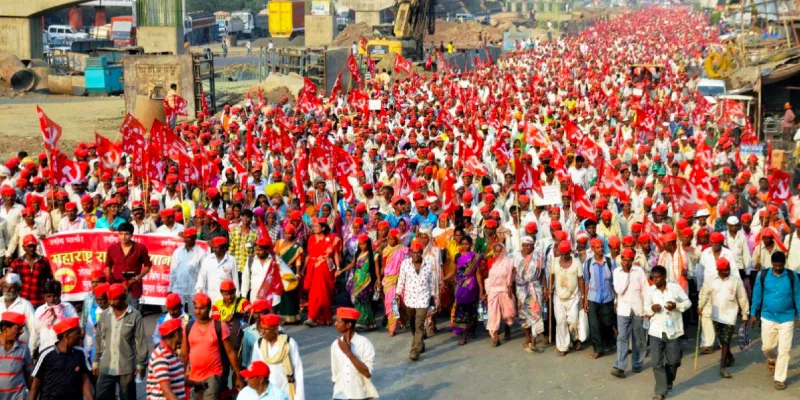
Many, including Balaji, question whether there is a political motive behind this march given that this protest led by CPI(M)’s All India Kisan Sabha gained wide support from opposition parties. Yet, one cannot deny the distress faced by India’s agrarian community.
Suicides and drought are a reality subjected to a majority of India’s population. Startups such as these offer fresh perspective and ideas to help the farmer resolve few issues of capital and market reach. However, the scale of startups and investment in the agricultural sector remains low. Given the massive range of issues faced by the agrarian community, it is important for governments and larger institutions to take similar approaches to revive India's agriculture sector.







